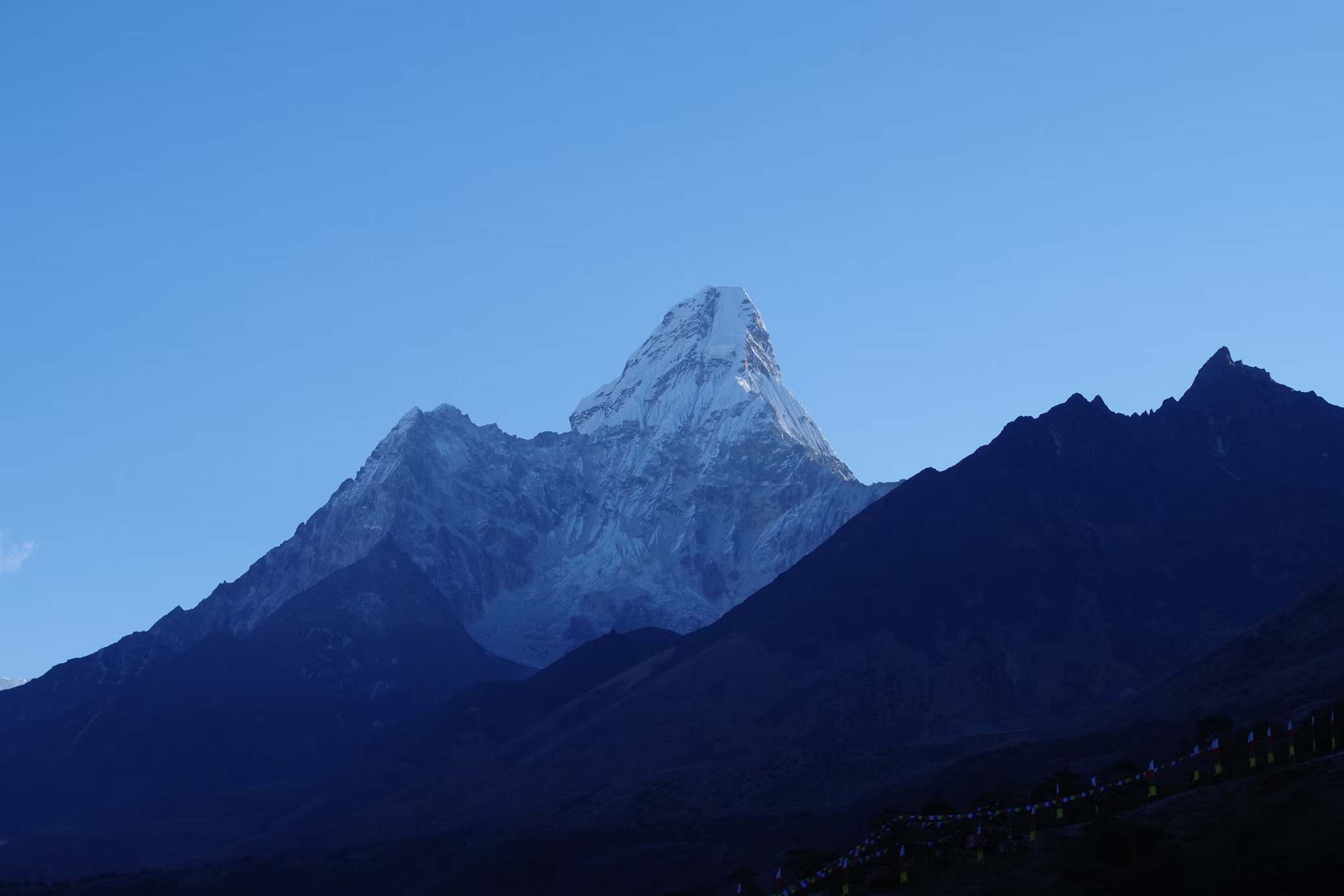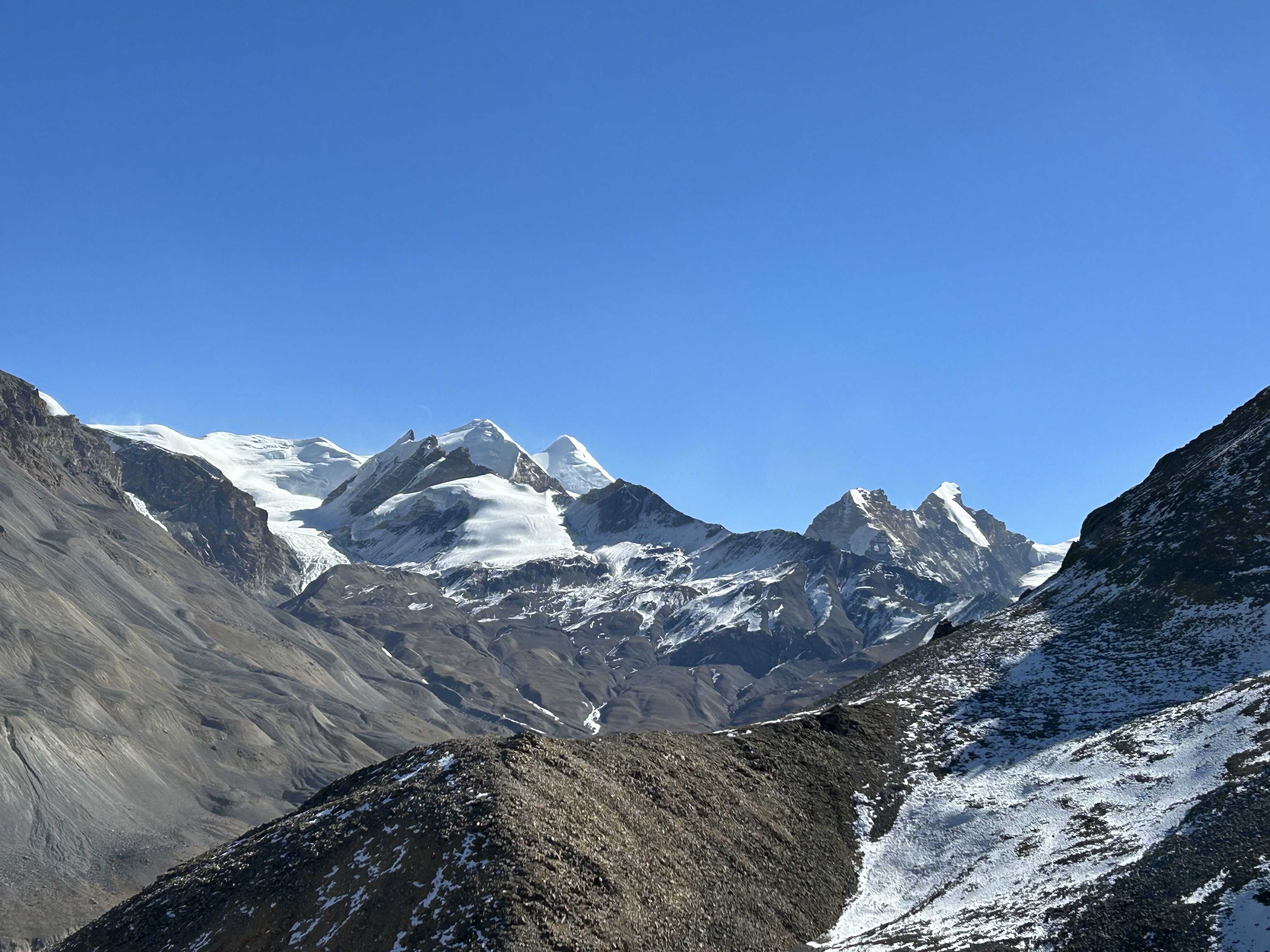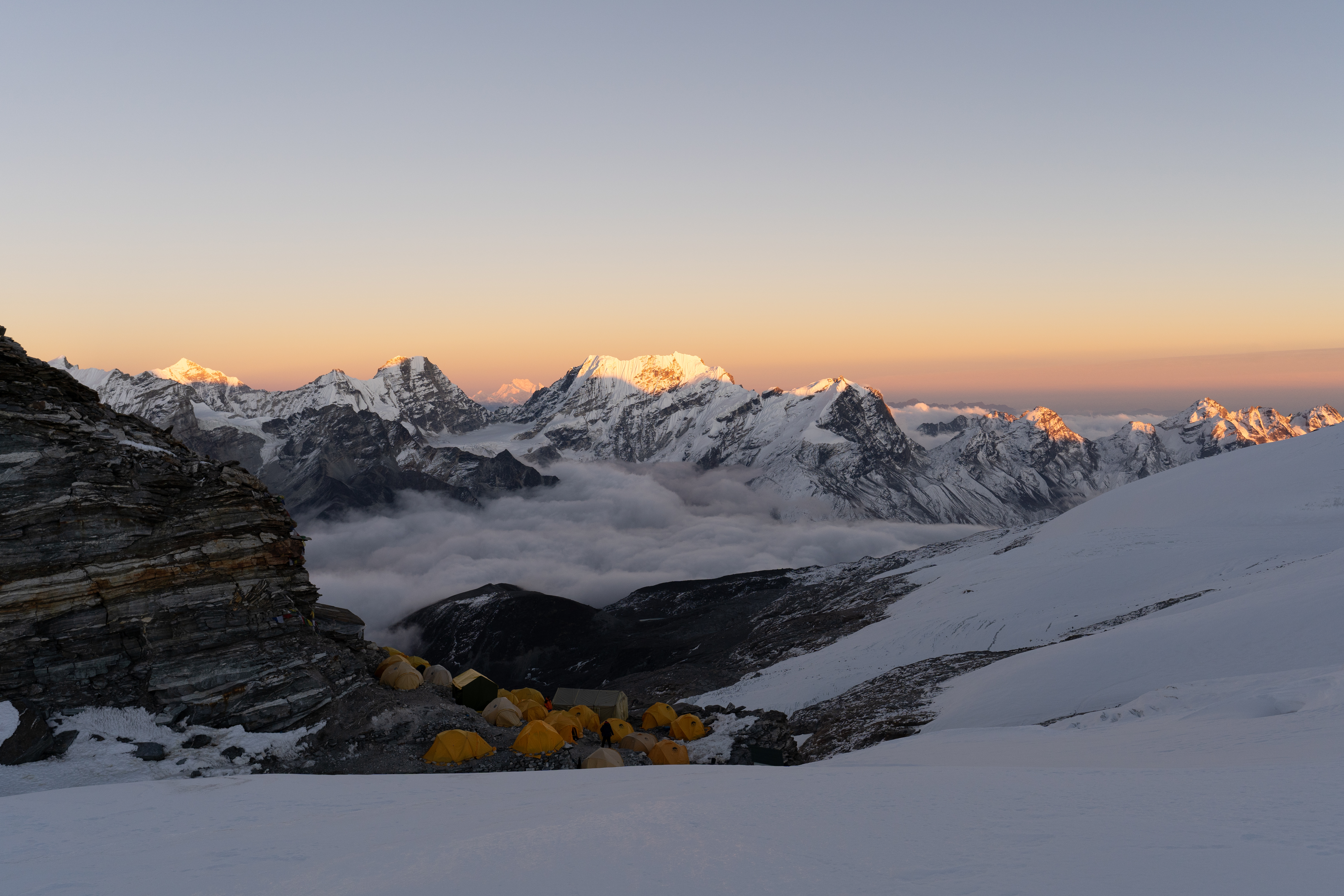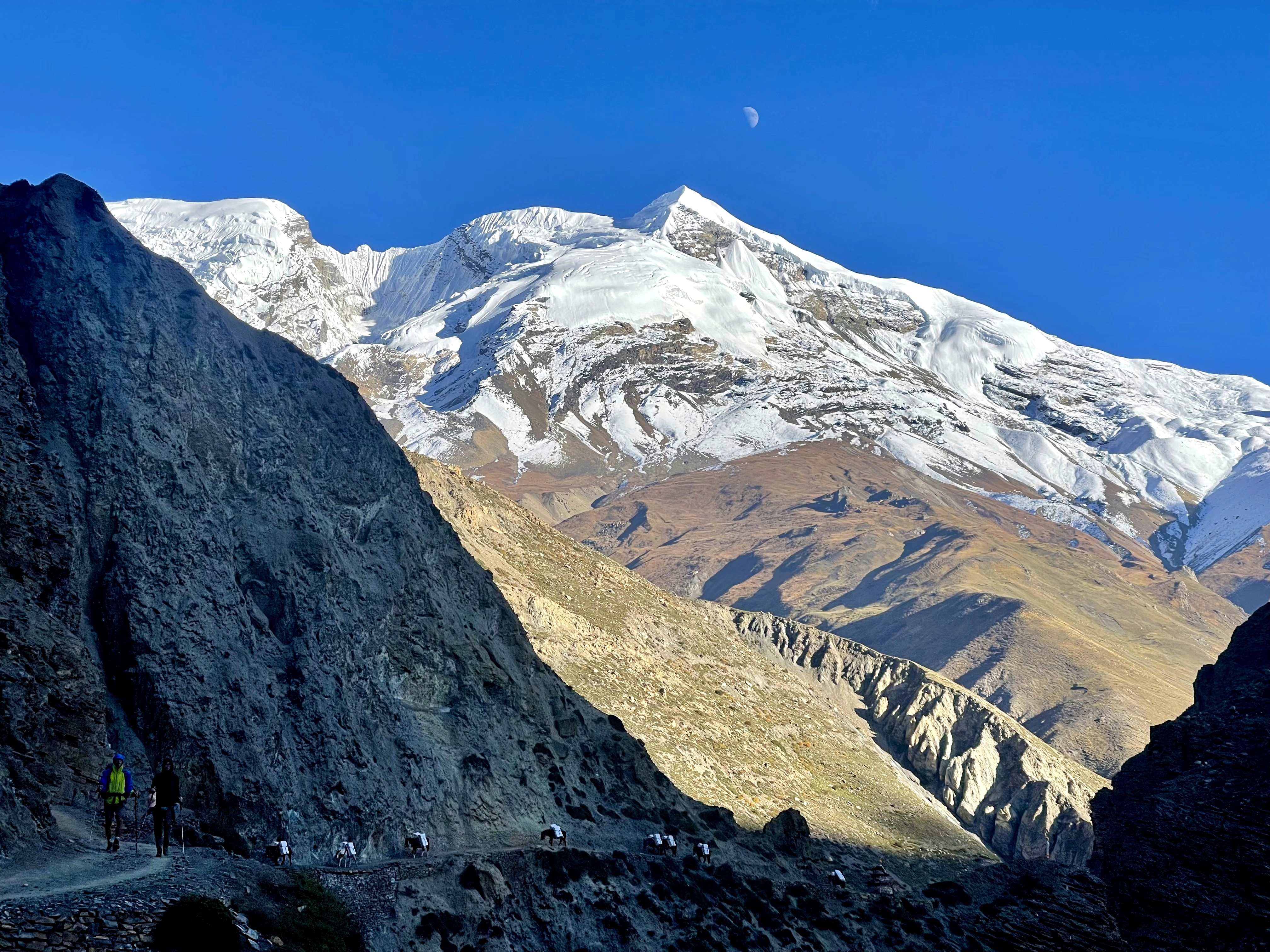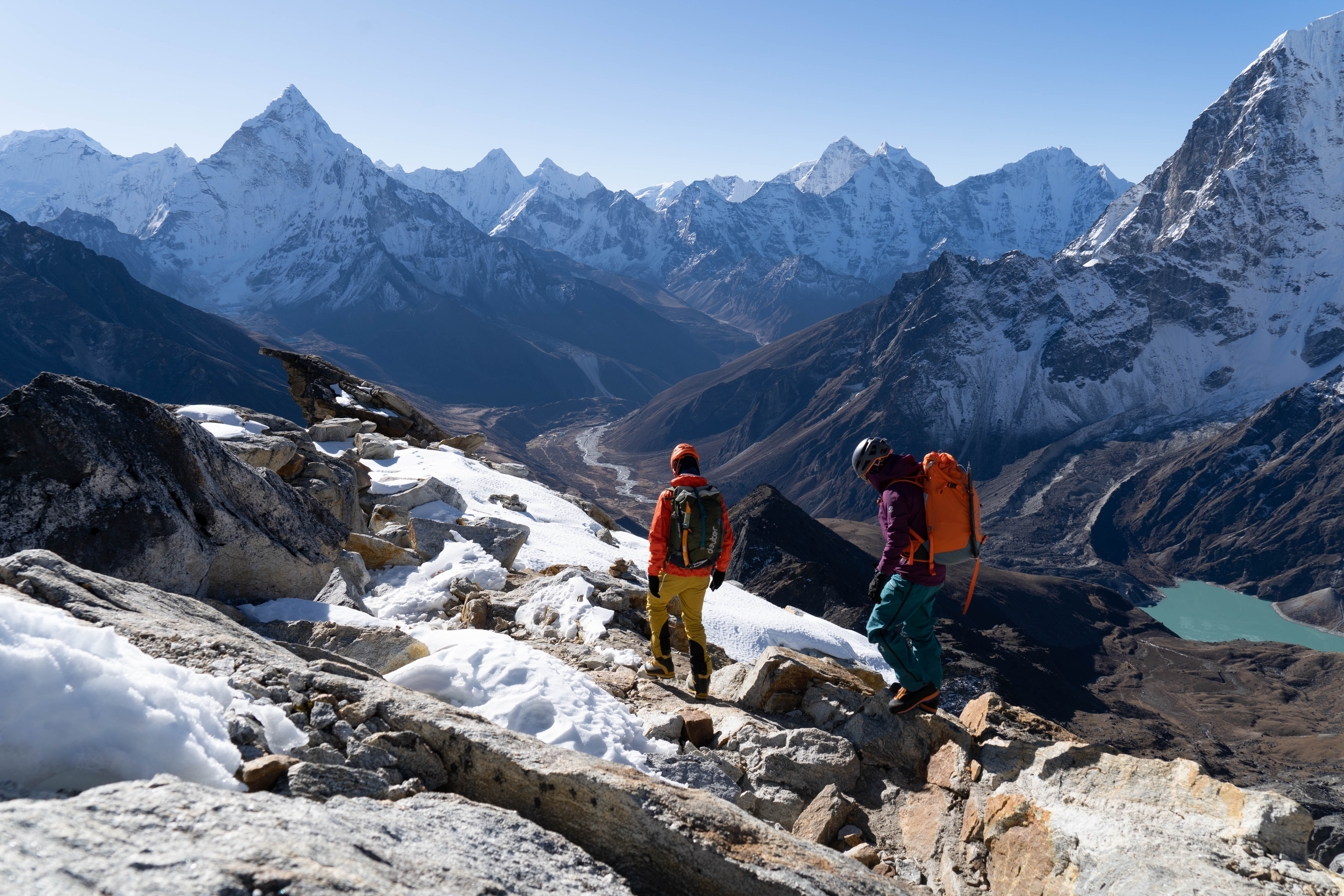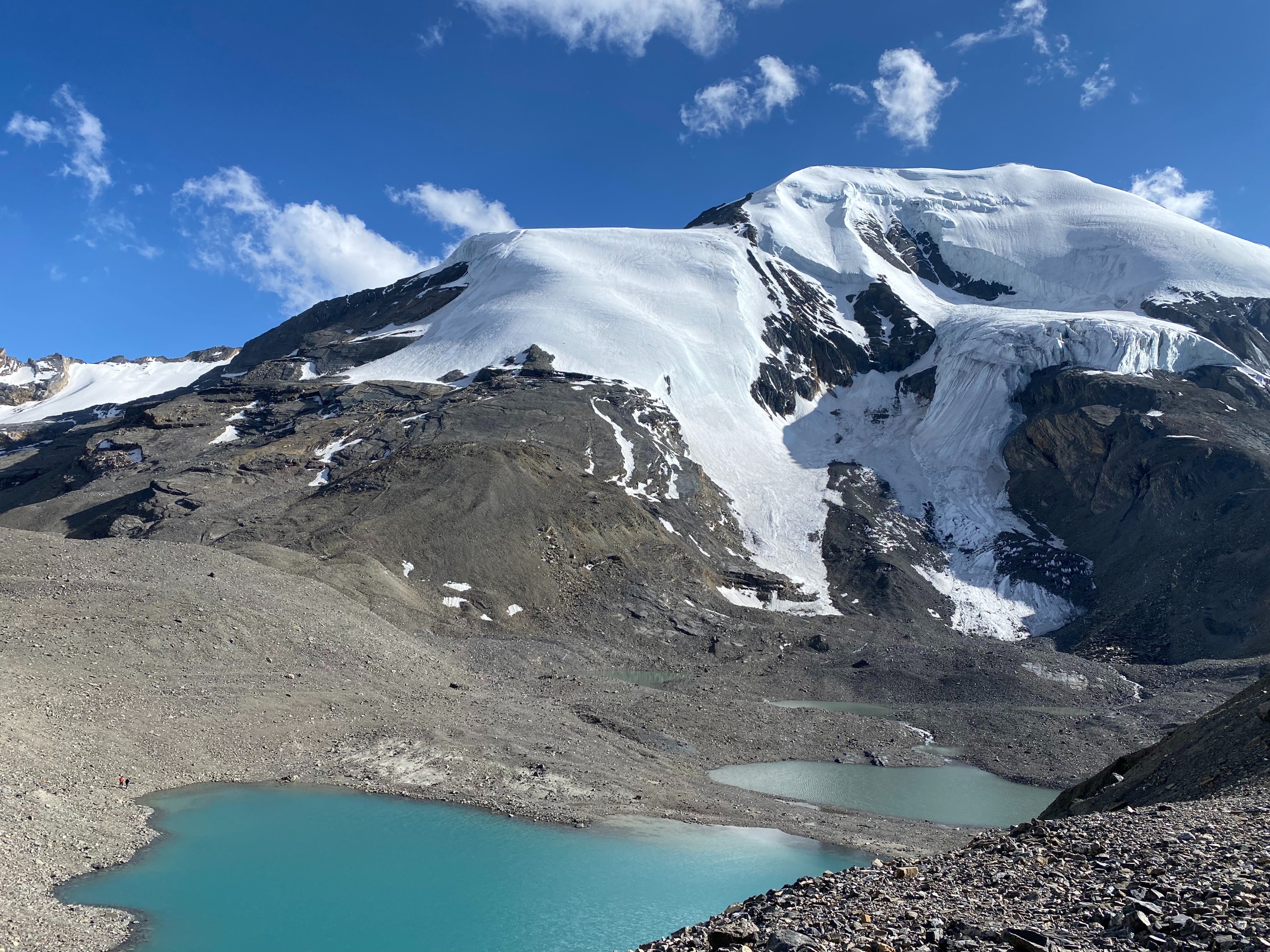This expedition is carefully crafted to offer an authentic and unforgettable Himalayan Expedition experience. It takes adventurers on a challenging journey through two of Nepal’s most famous high-altitude mountain passes: Amphu Lapcha Pass (5,845 meters) and Khongma La Pass (5,535 meters). These iconic crossings add excitement and adventure as trekkers navigate remote mountain passes, tackle rugged terrain, attempt icefall navigation, and make their way through steep ascents and stunning alpine terrain. Along the way, the journey connects three breathtaking Himalayan peaks: Mera Peak, Island Peak, and Lobuche East Peak, each offering a unique high-altitude climbing experience and spectacular views. This trek is more than just a physical challenge—it’s a true Nepal Trekking Adventure, filled with natural beauty, Himalayan wildlife, cultural richness, and personal triumph.
Mera Peak (6,474 meters)
Mera Peak Climbing offers one of the most rewarding challenges for adventurers seeking a thrilling yet achievable Himalayan mountaineering challenge. Located in the remote and peaceful Hinku Valley, the climb to Mera Peak offers more than just the excitement of reaching the summit. Trekkers will pass through lush rhododendron forests, cross high-altitude glaciers, and explore traditional Sherpa villages, where they can experience the warm hospitality and rich local culture.
One of the best things about Mera Peak Climbing is that it doesn’t require advanced climbing skills, though it does demand strong physical fitness, altitude acclimatization, and endurance due to the high altitude and long trekking days. This makes it an ideal option for beginners looking to explore snow climbing techniques and gain their first experience of glacier crossings in a high-altitude environment.
The highlight of Mera Peak Climbing is the summit push, where climbers are rewarded with a breathtaking 360-degree panorama of five of the world’s tallest mountains: Mount Everest (8,848 meters), Kanchenjunga (8,586 meters), Lhotse (8,516 meters), Makalu (8,485 meters), and Cho Oyu (8,188 meters). This incredible view makes the long trek and challenging climb truly unforgettable.
Island Peak (Imja Tse – 6,189 meters)
Island Peak Ascent, also known as Imja Tse Climb, is one of the most popular and thrilling multi-peak climb options in Nepal. Named in 1952 for its island-like appearance in the middle of the Chhukung Valley, Island Peak offers a perfect combination of natural beauty, adventure, and mountaineering challenges.
One of the most striking features of Island Peak is its west-face ridge, which rises dramatically from the Lhotse Glacier, creating a spectacular and imposing sight. The peak is an extension of the south ridge of Lhotse Shar, and it offers climbers a thrilling yet manageable route to the summit. The climb involves rocky trails, fixed rope sections, and snowy slopes, making it a rewarding adventure for trekkers with basic snow-climbing techniques and crevasse rescue knowledge.
Reaching the summit of Island Peak is an unforgettable experience. From the top, climbers enjoy panoramic views of some of the most iconic Everest region peaks. These include Mount Nuptse (7,879 meters), Mount Lhotse (8,501 meters), Mount Lhotse Middle Peak (8,410 meters), and Mount Lhotse Shar (8,383 meters). To the east, you can see the towering Mount Makalu (8,475 meters), while the stunning peaks of Mount Baruntse and Mount Ama Dablam dominate the southern skyline. These incredible views add to the sense of accomplishment and adventure that come with the Island Peak Ascent.
Lobuche East Peak (6,119 meters)
Lobuche East Summit offers a gateway to Himalayan high-altitude climbing and mountaineering. Known for its spectacular views, challenging terrain, and rewarding summit experience, Lobuche East Peak is a favorite among trekkers and climbers seeking an exciting yet achievable mountaineering challenge.
The route to the summit of Lobuche East involves a mix of rocky trails, icy ridges, and snow-covered slopes, requiring strong physical fitness, altitude acclimatization, and basic snow-climbing techniques. The final summit push is demanding but extremely rewarding, offering climbers sweeping views of some of the most famous Himalayan peaks, including Mount Everest, Lhotse, Nuptse, and Pumori.
Throughout the journey, climbers will be supported by experienced Sherpa guides, who provide guidance, technical support, and essential knowledge about climbing equipment, safety procedures, and the best techniques for navigating alpine terrain.

